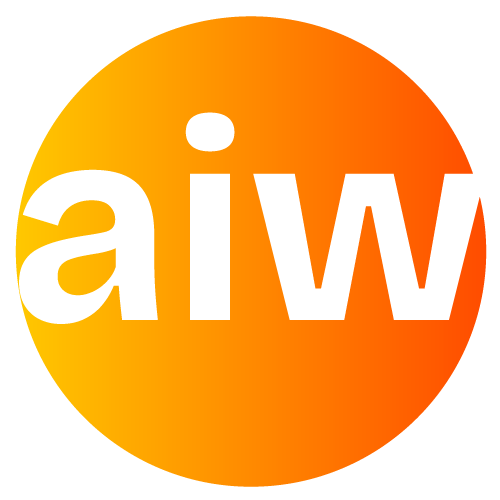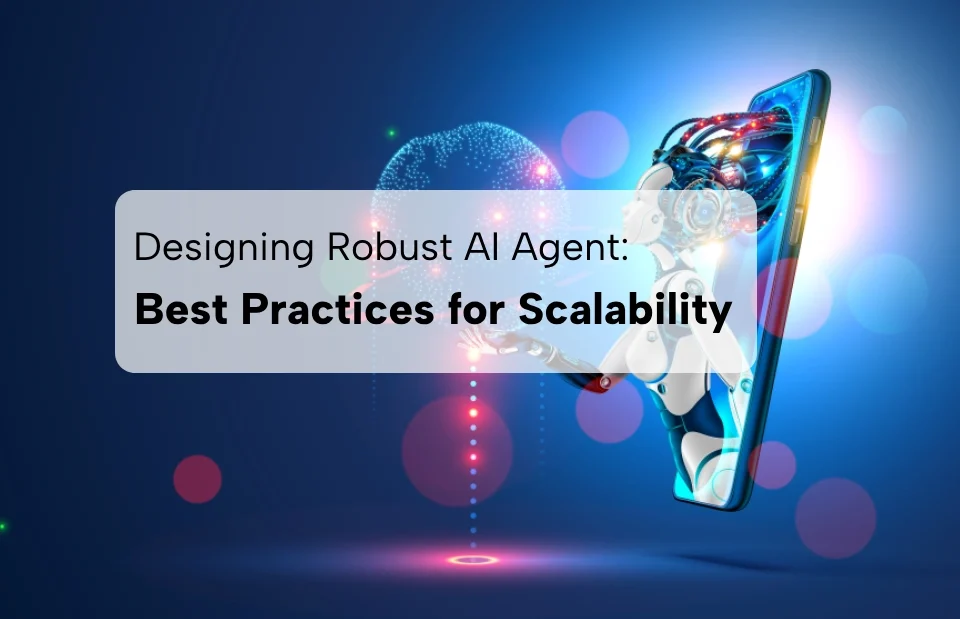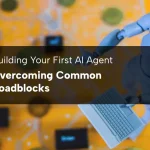Table Of Contents
Introduction
It’s 2025, and you might be aware that AI is doing everything from writing emails to predicting stock trends. But what if you can build an AI agent to answer questions and suggest products when no humans are around?
But let’s get to the reality. Being new to this space, figuring out how to build an AI agent can feel tough. However, with the right process, system framework, and tools, creating an intelligent AI agent is doable and scalable, too. 81% of customers now prefer AI-driven self-service over human help.
And this blog simplifies that journey.
We will walk you through what an AI agent is, where the common problems are for most, and the overall roadmap to follow. Also, we will see the steps on how to create an AI agent.
Key Takeaways
- AI agents are autonomous systems that can make decisions independently.
- There are seven types of AI intelligent agents you can choose from, according to your needs.
- AI agents are great for automating tasks like follow-ups, debt recovery, or lead gen.
- Tools like N8N, LangChain, and CrewAI help you build agents without writing complex code.

What is an AI agent?
Before we discuss how to create an AI agent, let’s first understand the basics of what an AI agent actually is.
AI agents are intelligent systems that take initiative, learn from data, and complete tasks independently. They automate tasks and make decisions independently, achieving things humans do but much faster, and run 24/7.
These agents work because they combine three essential traits:
- Autonomy – They don’t wait for commands.
- Perception – They gather data from inputs like text, images, or voice.
- Learning – They improve over time with feedback or new data.
Note: Don’t confuse agents with chatbots, GPT, DeepSeek, etc., which only respond when prompted. They think, act, and often improve their performance through learning. This is what makes it different from rule-based bots or traditional automation tools.
To understand better, consider this comparison:
| Features | Traditional Automation | Chatbot | AI Agent |
| Works on its own | No | Partially | Yes |
| Learns from feedback | No | Limited | Yes |
| Can handle tasks | Repetitive only | Reactive only | End-to-end workflows |
| Real-world examples | Auto emails, macros | FAQ bots | Robo-advisors, AI copilots |
With AI, you can have-
- A customer service agent to monitor conversations and solve issues across email, chat, or voice.
- A healthcare agent for scanning medical reports and alerting doctors about critical findings.
- A finance agent that can analyse real-time spending to offer personalised saving tips.
Top 7 Types of AI Agents (And where they’re used)
Not all agents are the same. They vary by complexity, use case, and learning ability. Below are the seven main types of agents in AI used in the real world:
-
Simple reflex agents
Reflex agents follow a basic set of rules. They don’t adjust based on experience. Their only job is to look at the current situation and respond right away.Example:
An email spam filter that blocks messages based on specific keywords.
Features:
- Does not store any memory.
- Works best in stable environments.
- Fast but rigid.
-
Model-based agents
Second on the list are model agents projected to grow by 46.3% CAGR in the coming 5 years. These agents still respond based on rules but keep a basic memory. Besides, they make better decisions using both current input and past data.
Use Case Example:
A robotic vacuum that remembers your room layout and avoids bumping into furniture.
- Maintains an internal model of the environment.
- More flexible than reflex agents.
- Useful in slightly unpredictable scenarios.
-
Goal-based agents
As the name suggests, Goal-based agents focus on achieving specific results. They evaluate different actions and pick the one that moves them closer to their objective.
Where they’re used:
A robotic vacuum that remembers your room layout and avoids bumping into furniture.
- Self-driving cars navigating traffic
- Warehouse robots manage package delivery
- HSBC deployed a fraud detection system to fight financial crimes in large or overseas transactions. This helped the bank minimize false anomalies by 60%.
A notable example of a goal-based agent is found in Waymo’s self-driving cars. They use intelligent AI agents to access the path conditions and obstacles and plan safe routes in advance.
In 2023, Waymo reported driving over 7 million miles with just 3 crashes, showing far better safety than human drivers. A 2024 safety report revealed that autonomous cars reduced crash risk by 92%, compared to self-driving cars.
-
Utility-based agents
These AI agents choose the action that gives the best outcome based on a scoring system. For instance, a food delivery app that weighs distance, driver availability, and customer rating can be used to assign orders.
Let’s understand this in detail:
Driver Distance to Restaurant (km) Rating Idle Time (min) A 2.5 4.7 10 B 1.2 4.5 5 C 3 4.9 15 Now, the agent:
- Collects driver data: distance, rating, idle time
- Apply weights to each factor.
For example:
- Distance (40%)
- Rating (30%)
- Idle Time (30%)
- Calculates the utility score and selects the one with the highest score
-
Learning agents
These are the most advanced. They use data to get better over time, even in new situations.
Real-life Use cases:
- Axiom (by Verses AI) is a new kind of learning agent that uses brain-inspired physical rules to understand the gameplay of video games. Where other agents needed over 24,000 steps, it learned 10 different games using only 3,175 steps.
- In fraud detection, AI agents learn to spot unusual activity by scanning millions of transactions.
- In education tools, AI agent Gradescope helps teachers grade quizzes, spot learning gaps, and personalize feedback. Compared to teachers, time taken for grading was 70% less. It also plans out customized learning paths for students based on their strengths and weaknesses.
Example:
Open AI’s Operator is an AI agent that works in your browser, doing multi-step web workflows like:
- Filling in the form details
- Make purchases
- Complete online tasks like flight bookings, etc.
-
Multi-Agent Systems (MAS)
These systems include multiple agents working together. Each agent may handle one task, and together, they solve complex problems.
Where they’re used:
- Accenture introduces Huddle – a collaborative interface that allows different tools or systems to work together like a single coordinated team. Currently it is used by 50+ partners like AWS, NVIDIA, Meta, Google, BMW, and ESPN.
- AI assistants like crewAI manage project steps with specialised bots
- Multiplayer game environments where agents simulate teams or competitors
-
Hybrid Agents
Hybrid agents combine two or more types of AI agents to handle different kinds of tasks. They mix quick reactions with deeper learning so the system can respond quickly and improve over time.
Where they’re used:
- A financial tool might use set rules to block risky trades instantly and use learning to improve strategy.
- A healthcare app can flag emergencies right away while also studying patient history to spot trends
Real-world Example:
Siemens uses a hybrid architecture in factories. Sensor data flags immediate faults (e.g., too much heat). Then, machine learning analyzes historical patterns to predict future failure.
Results:
- Reduced downtime upto 50%
- Improved 55% maintenance efficiency in 3 months
7-Step Process: How to Build an AI Agent From Scratch
This section explains how to make an AI agent in seven simple steps:
Step 1: Define the Agent’s Purpose
Start by asking what your AI agent should do. Be clear and specific. Do you want it to respond to customer questions, sort documents, or recommend content? The more focused the goal, the easier it is to design.
Step 2: Choose the Right Type of Agent
Pick the type of agent that fits your goal, uses intent, and offers educational resources. If the task is repetitive, a reflex or model-based agent may be enough. If your agent needs to plan or learn over time, consider goal-based or learning agents.
Still not sure? Check out our simple need guide to get started:
| Need | Agent Type |
| One-time responses | Simple reflex |
| Repeated decisions with memory | Model-based |
| Goal-driven responses | Goal-based |
| Priority-based decision-making | Utility-based |
| Self-improving responses | Learning agent |
| Multi-task, team-like workflows | Multi-agent system |
| A mix of fast response and learning | Hybrid agent |
Step 3: Pick a Framework or Tool
Unless you are building enterprise software, you don’t need to code everything from scratch. Use available tools that suit your goals.
Beginner-friendly options:
- GPTs – great for fast, simple assistants
- n8n – perfect for workflow automation without code
- LangChain – helpful if you want to plug in trained LLMs
- CrewAI – useful for multi-agent tasks like research or lead gen
- Streamlit – great for building a clean interface in Python
- CursorAI – ideal for coding support and agent development in an IDE
Step 4: Collect and Clean Your Data
Your agent needs data to understand its environment. This can include:
- Customer queries
- Past email/chat transcripts
- Knowledge bases
- CRM or sales data
Make sure the data is:
- Clean (no duplicates or errors)
- Relevant to the problem
- Structured well (CSV, JSON, etc.)
Quality matters more than quantity if your agent has to learn from this data.
Tip: Use tools like Label Studio or Datasaur to tag and label datasets for training.
Step 5: Build the Agent Logic
Now, it’s time to design how your agent will act.
You will need to:
- Define what triggers have what actions (e.g, a user delays loan payments, so the AI must send auto-reminders via emails or calls).
- Connect to APIs if needed.
Step 6: Test the Agent in Real Scenarios
Build test cases that simulate actual user behaviour.
Checklist:
- Does it respond correctly across different inputs?
- What happens when it doesn’t understand something?
- Is there a backup plan?
- Are response times within limits?
Step 7: Deploy and Monitor
Lastly, launch your agent in a real setting — but keep an eye on it. Monitor:
- Errors or misfires
- User drop-off points
- Feedback trends
- Task completion rates
Use feedback and analytics to improve the system.
Conclusion
Building your first AI agent doesn’t have to be complicated. With the right task, a clear agent type, and beginner-friendly tools, you can create something that saves time and adds real value.
The most important thing? Don’t overthink it. Start with one goal. Test your agent in real scenarios. Keep improving based on feedback. Ready to automate real tasks with your own AI agent? Book a free demo with AI Workfllow and explore what’s possible.

Dhruv Dholakia has spent over a decade helping enterprises streamline operations through workflow automation and digital transformation. With a strong belief in building purposeful tech, he now focuses on the next frontier—custom AI solutions and Agentic AI. For Dhruv, AI isn’t just a buzzword; it’s a tool to solve real-world problems and create lasting impact. He’s passionate about making AI accessible, responsible, and truly useful for people, teams, and businesses navigating today’s fast-changing world.





